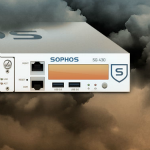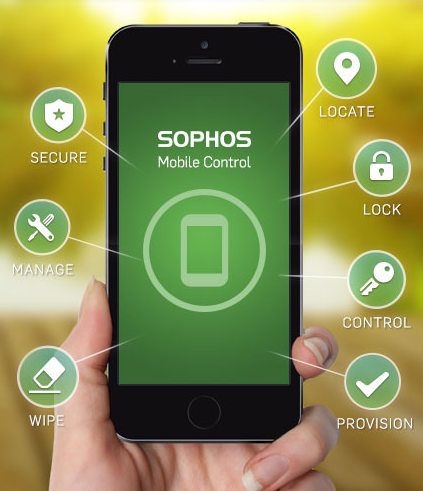News
Many organizations are considering next-generation solutions to deal with the unknown threats cybercriminals use to evade traditional defenses. One technology that’s had a fair share of hype is the sandbox.
A sandbox is an isolated, safe environment that imitates an entire computer system to execute suspicious programs, monitor their behavior, and understand their intended purpose, without endangering an organization’s network.
Choosing a sandboxing solution can be a challenge due to the numerous options available on the market. Consider the following five points before you make your decision.
1. Does the solution analyze a broad range of suspicious objects?
Pick a sandbox solution that can detect threats designed to evade sandboxes. Your sandbox needs to be able to analyze a broad range of suspicious files. Check that your chosen solution can analyze archives, Microsoft Office documents and PDFs, as well as executables.
2. Does it offer comprehensive operating system and application stack coverage?
Comprehensive platform coverage is important for detecting malware that has been fine-tuned to run only in a specific operating system or application.
3. Does it give contextual information about the malware or targeted attack?
Context about the targeted attack is mission critical. You need a solution that can give you granular, incident-based reports that provide valuable context.
4. What is the sandbox analysis rate?
Choose a solution that uses anti-malware and reputation services to reduce the number of wrongly convicted files and the number of files sent for sandboxing. This helps reduce impact on performance and your users.
5. Does it use collective security intelligence?
Conventional security checks fail to discover unknown threats. To improve the accuracy of detecting these threats, choose a solution that uses cloud-based collective threat intelligence from multiple events and customers.
We address all these questions in our new guide, Defeating the Targeted Threat: Bolstering Defenses With a Sandbox Solution. This free paper explains why you should consider a sandbox and answers your questions about what to look for in a sandbox solution.
Introducing Sophos Sandstorm
Sophos Sandstorm is an advanced persistent threat (APT) and zero-day malware defense solution that complements Sophos security products. It quickly and accurately detects, blocks, and responds to evasive threats that other solutions miss, by using powerful cloud-based, next-generation sandbox technology.
To find out if Sophos Sandstorm is the right sandbox solution for your business, visit sophos.com/sandstorm.
You can read the original article here.
Mobile devices are essential for the modern information worker. According to Forrsights Workforce Employee Survey, 74% of information workers use two or more devices for work, including desktops, laptops, smartphones and tablets.
Many of those employees are using the same device to manage personal and professional tasks, yet they still want to keep their personal and corporate data separate.
In the era of enterprise mobility, organizations need visibility and control over who is moving their corporate data, where, and with which apps and devices.
An enterprise mobility management (EMM) solution can help organizations move away from restrictive device and content policies and towards secure environments where protected data is easily accessible from anywhere for on-the-go employees.
The task of enterprise mobile security really boils down to three basic needs:
- Protecting the user and device
- Protecting access to the enterprise network
- Protecting enterprise data
And of course, most importantly, you need an easy-to-use solution that lets you accomplish your goals with available resources.
EMM solutions are aimed at smartphone and tablet devices and should support multiple operating systems. The core components of EMM include: mobile device management, mobile application management, mobile security, and mobile content management.
Download the free whitepaper Getting Started With Enterprise Mobility Management, to see how you can craft an effective EMM strategy, empowering your workforce while keeping corporate data safe.
Sophos Mobile Control
Sophos Mobile Control is the simplest way to enable secure mobile productivity and collaboration for your business. Sophos Mobile Control is a complete stand-alone mobile security solution, while also integrating directly with Sophos UTM and Sophos SafeGuard Encryption to deliver the most comprehensive mobile protection available on the market today.
You can read the original article here.
Array Networks Inc., a global leader in application delivery networking, announced today the immediate availability of subscription-based virtual application delivery controllers (ADCs) in Amazon Web Services Marketplace (AWS Marketplace), an online software store that streamlines the procurement process for customers looking to find, buy, and immediately start using third-party software and services that run on AWS.
As cloud and virtualization continues to expand its footprint within the business landscape, ensuring performance and availability for these new deployment models has become increasingly important. In addition, enterprises and service providers deploying on the cloud need to make applications securely available to a growing base of end users. Array’s vAPV virtual ADC for AWS provides optimized performance and availability for business-critical applications running on AWS.
Array’s new subscription-based virtual ADC offerings complement existing Array ‘bring-your-own-license’ (BYOL) solutions available in AWS Marketplace. In contrast to BYOL offerings – which require customers to purchase a license from Array – the new subscription offerings allow customers to purchase Array solutions directly from AWS on either an hourly or a yearly basis. For additional flexibility, both hourly and yearly subscription options are available in four different sizes (entry, small, medium and large) to meet the needs of any size business or deployment.
For enterprises migrating to the cloud, they can purchase all of the storage, server and networking they need on the AWS Cloud and scale as demand for their products and services grows using Array‘s vAPV ADCs. And for those that have deployed Array ADCs in their own data centers, it is now an option to burst to AWS and have an identical application delivery solution on the AWS Cloud for back-up capacity.
“Customers are beginning to combine traditional hardware appliances with virtual solutions and cloud hosted solutions to create architectures that best suit technical and business requirements,” said Paul Andersen, director of marketing at Array Networks. “We are dedicated to meeting our customers’ evolving application deployment requirements and expanding Array’s offerings in the AWS Marketplace is a great step to broadening access to guaranteed performance in virtualized infrastructures.”
Perpetual, monthly and yearly subscription BYOL licenses are available from Array to provide flexibility that is in line with the flexibility of AWS. Hourly and yearly subscriptions for entry, small, medium and large virtual ADCs are available immediately directly from AWS Marketplace.
Υou can read the original article here.
Your organization likely spends many resources preventing external breaches and takes the necessary measures to ensure that your company’s data is protected. However, did you consider if you’re in fact having coffee with the hacker every morning…?
Organizations tend to forget that almost half of data losses are results of internal breaches, half of which are intentional criminal acts and the rest a consequence of human error (figure 1).
Handling data while at the same time ensuring protection of privacy, is a crucial ingredient for success in today’s business environment. How do we acknowledge these facts and minimize internal breaches, without increasing distrust and monitoring of our employees’ every move?
Intentional breaches
A survey from Clearswift recently revealed that one third of employees is willing to sell company data for the right price. Again: one out of three! Of course organizations have legal measures to safeguard that employees act ethically, but business processes are highly based on trust of confidentiality.

The intentional breaches are often committed by employees with easy access to critical company data and companies usually don’t have sufficient measures implemented to ensure restricted access. So how can you achieve a balance between providing your employees freedom to operate, while still monitoring and detecting suspicious behavior?
Implementing a solution to detect unusual behavior and pattern recognition will be a great starting point. Let’s say that an employee operating in the marketing department with a consistent workflow starts accessing files within research and development. Often there will be a natural explanation, but if the employee simultaneously uploads large data amounts via Dropbox, one might expect that something is wrong. A SIEM solution is able to assist in the process of detecting unusual behavior like this and can provide your company with a holistic view of data flows and analysis.
A recent report from Intel Security shows that the most common format of stolen data are regular documents. Due to the electronic handling of sensitive corporate documents, stealing data is no longer associated with tiptoeing towards the copying machine around midnight. It is as easy as using a USB stick or sending an e-mail, but these actions all leave a digital fingerprint. This digital footprint enables your SIEM solution to detect a potential breach and make the management team aware of the possible malicious activity.
Accidental breaches
Even though half of data breaches are internal, as mentioned, around 50 percent of these are not a result of greed, but rather employees’ ignorance of the implications of certain actions. We may all know the famous example of the U.S. Department of Homeland Security, who planted USB sticks with their own company logo in the parking lot outside their office. Shockingly, they found that 90% of the USB sticks were picked up by employees and without hesitation plugged into company computers.
This illustrates the fact that internal data breaches are often not a result of greed, but rather ignorance or unawareness of proper cyber security best practices.

How can we make employees think twice before picking up the USB drive and checking the content without hesitation? It is important that companies have internal focus on current issues, update operational practices and implement sufficient data handling policies.
By employing a SIEM solution and establishing formal measures for operations, companies will be able to setup alarms if e.g. blueprints, strategic roadmaps or new product descriptions are accessed or transferred electronically – thus, providing organizations with the ability to identify and address potential vulnerabilities and anomalies within their IT environment.
Final recommendations
It is crucial for companies to start acknowledging the importance of internal breaches and establish measures for responding to the challenge. Often it is small errors leading to increased vulnerability. By employing a SIEM solution and establishing company governance addressing operational practices, companies will be able to address the issue of internal breaches and mitigate the problem.
Υou can read the original article here.
While the security industry has been increasingly trending toward complicated point products – each with their own admin consoles, policy setup, and terminology – we’ve been steadfast in our belief that powerful, feature-filled, and industry-leading security should be integrated and uncomplicated.
You may be aware of our “Security made simple” tagline, but if even if you aren’t, you should absolutely feel it when you use our products. And we believe that we’ve taken a major step forward in that spirit today with the launch of our all-new Sophos Central integrated management platform, formerly known as Sophos Cloud.
While Sophos Cloud has been widely recognized as an incredibly powerful and easy-to-use tool for managing endpoint, mobile, web, and server products, Sophos Central paves the way for accelerating the innovation that’s been a constant focus of ours since the launch of our very first products.
We’ve worked incredibly hard on Sophos Central over the past year, but we’re not done yet. In the coming year, you’ll come to rely on Sophos Central as home base whether you are a partner, admin or end user.
- Sophos Central Partner helps you manage and track your business, identify revenue opportunities, and features seamless jump-points to Sophos Central Admin.
- Sophos Central Admin leads the way when it comes to real-time, synchronized security. The identification and remediation of threats becomes a simple one- or two-click affair.
- And our upcoming Sophos Central Self Service offering will make it easy for end users to work with quarantined email, bring-your-own-device provisioning, data encryption, Wi-Fi setup and much, much more.
We’re absolutely thrilled about the release of Sophos Central. We think it strikes an almost impossible balance between power and ease-of-use. But we’re even more excited about what it represents for the future of Sophos. This is a big day; this year will be even bigger.
Υou can read the original article here.
There are millions of “smart,” connected devices that comprise the Internet of Things (IoT), ranging from mobile phones to computers, home thermostats, video surveillance cameras and coffeemakers. The analyst firm Gartner recently forecast that 4 billion connected things will be in use in the consumer sector in 2016, and will reach 13.5 billion in 2020.
The Internet of Things comes with advantages, as well as a host of security disadvantages. To begin with, IoT devices often do not have strong security features built into them to prevent hackers from accessing them. Aside from personal privacy and security concerns that result from these security gaps, the bigger danger is that these connected devices can be harnessed by hackers to form a botnet, which is an interconnected network of computers infected with malware without the user’s knowledge. Botnets are also known as “zombie armies” that can be deployed on thousands—if not millions—of connected devices to send a spam attack, spread malware or launch a distributed denial of service (DDoS) attack. The more Internet-connected devices there are, the greater the potential for extremely large botnets.
Many manufacturers are undoubtedly improving the security of their IoT devices, but even if manufacturers tried to keep up with the latest security best practices, hackers would probably find a security gap or figure out a work-around. In particular, DDoS attacks are common because it’s so easy to purchase and launch a DDoS toolkit. In a recent Information Age article, “Should we be afraid of big bad botnets?” Corero COO Dave Larson writes:
“A quick Google search and a PayPal account makes botnets readily available for just a few dozen dollars, with no coding experience necessary. And they are becoming increasingly popular – DDoS-for-hire botnets are now estimated to be behind as many as 40% of all network layer attacks.”
The ultimate goal of a DDoS hacker who hacks into an IoT device is not to interfere with consumer heating systems or interrupt their morning coffee ritual; rather, the goal is to harness thousands of devices to turn them into a zombie army. A DDoS attack can be large enough to bring even an otherwise “secure” corporate network to its knees, or it can be small—barely noticeable “white noise” that escapes human detection yet infiltrates and maps networks in a matter of seconds. Both are dangerous.
Larson continues:
“Looking forward, there is really no limit to the potential size and scale of future botnet-driven DDoS attacks, particularly when they harness the full range of smart devices incorporated into the Internet of Things. By using amplification techniques on the millions of very high bandwidth density devices currently accessible, such as baby video monitors and security cameras, DDoS attacks are set to become even more colossal in scale.”
It is difficult to prevent IoT devices from being recruited into a botnet, but organizations can certainly protect their networks by deploying an in-line, real-time, automated solution at the network edge, to detect and eliminate the threats from entering a network. Botnet DDoS attacks cannot be traced to their origins, so the best approach is a defensive one; build a SmartWall Threat Defense System to protect your network.
You can read the original article here.
Cyberattacks that use unknown malware to evade conventional protection are a growing threat, and many businesses are considering next-generation sandbox solutions to deal with these unknown threats.
But these technologies are often too complex and expensive for many businesses to consider. This is why we’ve developed Sophos Sandstorm – to provide the advanced protection organizations need, while also making it simple and affordable to buy and maintain.
Your business needs a range of security technologies to stay protected against known and unknown threats: URL filtering, AV scanning, Live Protection and IPS are all critical to your protection.
These technologies are complemented by Sophos Sandstorm’s next-generation sandbox, which provides you with your own dedicated environment to quickly and accurately detect, block and respond to unknown, evasive threats.
How Sophos Sandstorm works
Your Sophos security solution tests a potential threat against all conventional security checks, such as using anti-malware signatures and looking for bad URLs. If the file is not detected as a threat, the Sophos security solution sends a file hash to Sophos Sandstorm to determine if it has been previously analyzed.
If it has been previously analyzed, Sandstorm passes the threat intelligence to the Sophos security solution. Here the file will be delivered to the user’s device, or blocked depending on the information provided.
If the hash has not been seen before, a copy of the suspicious file is sent to Sandstorm. Here the file is detonated and its behavior is monitored. Once fully analyzed, Sophos Sandstorm passes the threat intelligence to the Sophos security solution. Again, the file will be delivered to the user’s device or blocked, depending on the Sandstorm intelligence.
The Sophos security solution uses the detailed intelligence from Sophos Sandstorm to create deep, forensic reports on each threat incident.
How to try Sophos Sandstorm
Businesses like yours are looking for a cost-effective, advanced threat solution that’s also easy to manage and provides useful threat intelligence.
Sophos Sandstorm is easy to try, and works with our Secure Web Gateway, Secure Email Gateway, UTM and Next-Gen Firewall. Simply click on the free trial button, then activate the policy.
Watch the short video below and visit sophos.com/sandstorm to learn more about why Sophos Sandstorm is the simplest, most effective solution to protect your business against unknown threats.
You can read the original article here.
Array recently published a new white paper, titled ‘360° Application Security.’ The white paper describes an architecture for holistic multi-layer security for Web-based business operations that addresses all potential attack vectors, and does so in a coordinated manner using an architecture that will scale to meet the needs of a growing business.
The infographic provides a brief overview and synopsis of key points in the white paper.
Learn more about how you can achieve security without compromise – gaining the security needed to keep your operation running smoothly, without unduly impacting performance and productivity. Click the image below to view the 360° Application Security infographic.
You can read the original article here.
Παράλληλα με το Συνέδριο InfoCom Security που θα πραγματοποιηθεί στις 6 & 7 Απριλίου στο Divani Caravel – θα διεξαχθούν διάφορα workshops που θα καλύψουν πολλές πτυχές του τομέα IT Security. Έλληνες αλλά και ξένοι εισηγητές, από διάφορες εταιρίες και φορείς, θα αναδείξουν αναλυτικά, κρίσιμα πρακτικά ζητήματα που σχετίζονται με τις προκλήσεις του σημερινού τοπίου των απειλών, και θα προτείνουν τεχνικές καθώς και διάφορες λύσεις για την προστασία των συστημάτων πληροφορικής και των δικτυακών υποδομών.
Οι εταιρείες NSS και Sophos, για πολλοστή φορά θα βρίσκονται σε συνέδριο InfoCom όπως εδώ και πολλά χρόνια βρίσκονται στην πρώτη γραμμή άμυνας ενάντια σε απειλές όπως το hacking, το malware, το ransomware κ.ά.
Στο συνέδριο, την 1η ημέρα, Τετάρτη 6 Απριλίου, θα βρίσκεται ο Chester Wisniewski, Senior Security Advisor της Sophos, ο οποίος θα μιλήσει για την προσέγγιση της Sophos σχετικά με την αντιμετώπιση του ransomware. Το ransomware, αποτελεί μία ιδιαίτερα διαδεδομένη μέθοδος που ακολουθούν κυβερνοεγκληματίες και απατεώνες για να αποσπούν συνολικά τεράστια χρηματικά ποσά από απλούς χρήστες, επιχειρήσεις, κρατικούς οργανισμούς ή ακόμα και χρηματοπιστωτικά ιδρύματα.
Ουσιαστικά, το ransomware, κρατάει όμηρους τα αρχεία των υπολογιστικών συστημάτων, κλειδώνοντας τα με απαραβίαστη κρυπτογράφηση, και δεν παρέχει πρόσβαση σε αυτά μέχρι να πληρωθούν λύτρα. Πρόκειται για μία από τις μεγαλύτερες απειλές για τους απλούς χρήστες στο σπίτι όσο και για τις επιχειρήσεις. Τον τελευταίο μάλιστα καιρό, κυκλοφορούν νέα στελέχη ransomware –όπως το Locky- που στοχεύουν τόσο τους υπολογιστές Windows, όσο και τους υπολογιστές Linux και Mac καθώς και συσκευές Android.
Οι εταιρείες NSS και Sophos, θα εξηγήσουν τον τρόπο που λειτουργεί το ransomware και τους λόγους εξάπλωσης του, θα υποδείξουν πρακτικά, βραχυπρόθεσμα και μακροπρόθεσμα μέτρα προκειμένου να παραμείνετε ασφαλείς απέναντι στην απειλή, και θα σας αποκαλύψουν τις βέλτιστες πρακτικές για να κρατήσετε τα δεδομένα σας ασφαλή, συμπεριλαμβανομένης της ρύθμισης της ασφάλειας σας, της εκπαίδευσης του εργατικού δυναμικού σας, και της δημιουργίας αντιγράφων ασφαλείας των αρχείων σας.
Την επόμενη μέρα, στις 7 Απριλίου, η NSS θα πραγματοποιήσει επίδειξη του τρόπου διαχείρισης της κρυπτογράφησης σε ένα ετερογενές περιβάλλον χρησιμοποιώντας το εκπληκτικό εργαλείο Sophos SafeGuard και λίγο αργότερα θα γίνει επίδειξη παράδοσης εφαρμογής σε μεγάλη κλίμακα με το Array Network.

Πιο συγκεκριμένα, τα ιδιαίτερα ενδιαφέροντα workshops είναι τα παρακάτω:
1η ημέρα – Τετάρτη 6 Απριλίου
ΑΙΘΟΥΣΑ ΒΕΡΓΙΝΑ
14:30-16:00 Η προσέγγιση της Sophos για την αντιμετώπιση του Ransomware
Θα μιλήσουν οι Chester Wisniewski, Sophos Senior Security Advisor και Michalis Eleftheroglou, NSS Professional Services Engineer
Εταιρικό workshop -προσκλήσεις από την εταιρεία-πληροφορίες στο: sales[at]nss.gr ή στο booth της NSS στο συνέδριο.
2η ημέρα – Πέμπτη 7 Απριλίου
ΑΙΘΟΥΣΑ ΒΕΡΓΙΝΑ
10:00-11:00 Επίδειξη του τρόπου διαχείρισης της κρυπτογράφησης σε ένα ετερογενές περιβάλλον χρησιμοποιώντας το Sophos Safeguard
Θα μιλήσουν οι George Kouimintzis, NSS Commercial Director – Anastastios Veresses, Netsquare Support Engineer
Δωρεάν προσκλήσεις
11:00-12:00 Παράδοση εφαρμογής σε μεγάλη κλίμακα χρησιμοποιώντας το Array Network
Θα μιλήσει ο Michalis Eleftheroglou, NSS Professional Services Enginee
Δωρεάν προσκλήσεις
If there’s one thing we know about cybercrooks, it’s that they are persistent. When they find a formula that works, they’ll keep on using and improving upon that formula until it no longer gets the job done.
Ransomware that hijacks your files and locks them up using unbreakable encryption has been quite successful for the crooks, making it a widespread and major threat for home users and businesses alike. If you don’t have preventative measures in place and get hit with ransomware, one way or another you will end up paying the price.
In recent months we’ve seen new strains of ransomware crop up that show the problem isn’t going away any time soon. The nasty ransomware known as Locky has been infecting Windows computers through malicious email attachments. There’s even ransomware targeting Android, Linux and Mac.
In light of this ongoing threat, Sophos has created a new resource showing you How to stay protected against ransomware. It’s an easy-to-follow guide offering best practices for keeping your data secure, including how to configure your security, train your staff, and back up your files.
This guide covers:
- How ransomware attacks work
- Why ransomware infections continue to spread despite existing security measures
- Practical short and long-term steps you should take to stay protected against ransomware
- How to optimally configure your Sophos solutions to protect against ransomware
Download the whitepaper now to see how you can stay safe from current and future ransomware threats – it’s a free resource, with no registration required.
You can stay up-to-date with evolving threats and get security advice from Sophos experts by following us on social media and subscribing to our blogs.
Visit our award-winning Naked Security blog to read up on our recent research and top security tips for stopping ransomware threats:
- Locky ransomware – what you need to know
- Security vs convenience: the story of ransomware spread by spam
- Got ransomware? What are your options
Listen to the Sophos Techknow podcast below for a quick educational course on ransomware, as Sophos experts Chester Wisniewski and Paul Ducklin explain how ransomware works and what to do about it.
You can read the original article here.
After a successful beta, we’re pleased to announce the initial availability of UTM Elevated 9.4.
UTM 9.4 elevates protection against targeted and evasive threats with the addition of Sophos Sandstorm, supports the latest RED 15w and AP 15C hardware, and adds some of your top requested features.
Here’s everything you need to know about the roll-out of UTM Elevated 9.4.
In this initial soft launch phase, you can download the 9.4 Up2Date package and apply it to your existing UTM 9.35 device, or download the full 9.4 ISO installer for new software or virtual deployments.
Up2Date Package: ftp://ftp.astaro.com/UTM/v9/up2date/
ISO Installer: https://www.sophos.com/en-us/support/utm-downloads.aspx
The automatic roll-out of Up2Date packages to active UTM devices is expected to start in early April, with general availability to follow some time after that. As usual, updates are free for all customers with an active subscription license.
Please subscribe to the blog or check back regularly for updates.
Sophos Sandstorm and hardware availability and pricing
UTM Elevated 9.4 includes a new protection subscription for Sophos Sandstorm. Orders can be processed starting on March 25th. Since Sophos Sandstorm works to protect against web downloads and email attachments, as you might expect it also requires one of Web or Email Protection subscriptions or FullGuard or TotalProtect.
UTM Elevated 9.4 also includes support for the new RED 15w and AP 15c, which are already available for purchase.
Please contact your partner or reseller for pricing on these options.
Please note that the SG 85(w) model that was originally anticipated to launch alongside UTM Elevated 9.4 will come later, as the product team is still working on enabling the UTM 9 firmware to run on such a diskless device with performance and functionality that meet our high standards.
What’s new in UTM Elevated 9.4
Check out this video overview of what’s new in UTM 9.4 including a demo of Sophos Sandstorm on the UTM.
Extending zero-day protection
Today’s hackers are employing more targeted attacks with highly evasive, never-before-seen malware designed to breach security systems to gain access to a company’s resources, credentials and data. So while conventional anti-malware is still a critical first line of defense, it’s no longer enough in combating modern attacks.
Most next-generation sandboxing solutions designed to identify unknown malware are too complex and expensive for most businesses like yours to even consider. That’s why we’ve developed Sophos Sandstorm, a new subscription option that gives you an advanced malware defense solution. Sandstorm is a cloud-based sandbox solution that provides targeted attack protection, visibility and analysis that rises above the competition.
Sandstorm is simple, effective and affordable. You get enterprise-grade protection without the enterprise price tag or complexity.
Get the new Sandstorm datasheet.

Expanding the hardware line-up
RED 15w adds integrated wireless to the new RED 15 with a single radio supporting 802.11n 2×2:2 MIMO.
AP 15c packages the popular, new and affordable entry-level access point into a ceiling smoke-detector type chassis. It offers the same great performance and value as the AP 15 desktop model with a single radio with 300Mbps of 802.11n throughput – but now with a choice of band (either 2.4GHz or 5GHz).

Enhancing the firmware features
UTM Elevated 9.4 also delivers some of your top-requested features.
WAF Persistent Session Cookies improve the user experience when interacting with business applications protected by the Sophos UTM, reducing repeated sign-in prompts.
STAS (Sophos Transparent Authentication Suite) provides reliable transparent SSO authentication for network users, without requiring a client on the endpoint. STAS employs an agent on the Microsoft Active Directory Server that monitors and stores authentication activity and exchanges authentication information with the UTM, making user-based policy rules and enforcement easy.
IPv6 SSL VPN Support adds much requested support for IPv6 VPN connectivity with the UTM.
Feedback
As usual, please head over the the Sophos Community Forums for UTM to share your feedback.
And thank you…
A special “Thank You” for your support in helping us continue to build award-winning products!
You can read the original article here.
Ever wondered how cybercrooks do it? Do they need to be technology wizards? Programming geeks? Website developers? Spam kings? Hard-core reverse engineers?
In fact, these days, they don’t need much more than a determination to break the law and to get rich illegally at other people’s expense. (And, increasingly, to risk a pretty serious prison sentence if they’re caught.)
That’s because there’s a sizeable underground “malware-as-a-service” industry, where technically adept cybercriminals rent out all the technical wizardry that wannabe crooks need to join the ranks of the criminally active.
The words “hacker’s toolkit” no longer have the innocent meaning of the past, where they referred to a floppy disk of handy low-level utilities that your favourite sysadmin carried everywhere, just in case your MS-DOS hard disk stopped playing ball.
These days, there’s a much more sinister hacker’s toolkit available – a grab-bag of cybercrime services for hire: a cybercriminal “cloud services economy,” if like.
You can pay someone else to write your malware, infect a chosen number of victims, steal data, send spam, log keystrokes, extort money, and much more.
So…how does this underground work? What can we do about it?
Listen to SophosLabs Principal Researcher Fraser Howard explain in words that you can not only understand but also use to pass on the knowledge to others in your organisation, or to your friends and family. (Your email address will be requested before you join the webinar recording.)
You can read the original article here.
Sophos, a global leader in network and endpoint security, announced today that its Sophos SG Series UTM won the Excellence Award in the Best UTM Security Solution category at the SC Awards 2016. The award was presented during the 19th annual SC Awards Gala on Tuesday, March 1, 2016.
“We are delighted that Sophos SG UTM was yet again recognized at the SC Magazine Awards. Winning this award in Europe and now in North America is a great honor and reflects the enormous success our UTM product line has had around the world,” said Chris Weeds, senior director, product marketing, Sophos.
“Our network security product team is proud of this achievement, but credit also goes to our partners and customers, whose input and feedback helps us to continue to build award-winning products.”
Winners in the Excellence Award category were hand-selected by a panel of IT security experts from both the private and public sector. During the judging process, each finalist went through a rigorous evaluation that included in-depth analysis, analyst reports and/or product reviews. After a thorough and comprehensive analysis of each finalist’s strengths, Sophos was chosen as the winner in the Best UTM Security Solution category.
“From advanced hacks to massive malvertising campaigns to a host of ransomware variations, 2015 showed that once again, cybercriminals are upping their game when it comes to exploiting today’s businesses,” said Illena Armstrong, vice president, editorial, SC Magazine. “As a winner in the Excellence Award category, the Sophos SG Series UTM proved its ability to execute comprehensive security measures to protect the enterprise from data-stealing attacks.”
The SC Awards are recognized throughout the IT security industry and are the crowning achievement for IT security professionals and products.
Each year, hundreds of applications are reviewed and narrowed down to a select group of finalists that represent the best solutions, services and professionals working around the clock to protect today’s businesses from an ever-changing landscape of security threats. For more information and a detailed list of categories and winners, please visit www.scmagazine.com/awards.
You can read the original article here.
Malvertising is short for “malicious online advertising”, and it’s a pernicious problem. Simply put, it’s a way for crooks to infect innocent visitors via your website, to poison your website’s online reputation, and to trash your brand…
…without going anywhere near your servers, and without tripping any alarms on your own network. All the crooks do is buy ad space from an ad network and start placing ads – because ads, very loosely speaking, are tiny little web pages of their own that appear in ad-sized windows on other people’s websites.
You can probably see where this is going.
Once the ads are up and running, the crooks start sneaking booby-trapped, malware-delivering ads into the mix. And, with, that, they’ve as good as infected your website, and potentially infected hundreds or thousands of other websites at the same time. Every so often, your web property will pull an ad from the affected ad network, and once in a while the ad that appears will be an infected one, and one of your visitors will be put right in harm’s way.
Technically, the ad didn’t come from you, but that’s cold comfort to the afflicted visitor. Your website’s URL is in the address bar; your organisation’s logo is at the top left corner of the web page; and your brand is left to shoulder the blame. Also, infected ads appear irregularly, which makes them hard to detect and even harder to track down.
This, in turn, only adds to the sort of security confusion that helps the crooks. Even mainstream sites – sites that you’d never get into trouble for browsing at work, because they’re well-known sites with useful content – can fall victim to malvertising. This week’s news is that at least the BBC, Newsweek, The New York Times and MSN were affected over the weekend.
So it it’s certainly the sort of problem that could happen to you!
What to do?
Malvertising isn’t something that technology alone can fix.
That’s because it’s woven into the battle between adblockers (many of which aim to suppress ads outright, for a variety of reasons) and ad-sponsored websites (some of which argue that adblockers are crushing the value of free content, if that’s not an oxymoron).
Why not listen to the recording of yesterday’s Security SOS webinar, where Sophos security expert John Shier discusses the problem, and some possible solutions, in a clear and very balanced way?
You can read the original article here.
Today, every business is mobile. Across enterprises of all sizes, everyone from entrepreneurs and executives to knowledge workers needs to get online and access business data and files using smartphones, laptops and tablets.
Employees using their personal devices to access corporate applications and data can put their organizations at risk when they lose or misuse their devices. In addition, cybercriminals are capitalizing on these trends by building mobile malware to infiltrate networks and steal data. Mobile risk is on the rise.
For IT security teams, this new reality creates a daunting challenge. You must manage this increased risk while at the same time empowering users and respecting their privacy.
In order to help you meet this challenge, Sophos has created a new guide to setting priorities that allow you to provide flexibility, but also protect your networks and corporate data. Our free whitepaper 3 Steps to Securing the Mobile Workforce lays out a simple approach for organizations to successfully secure their mobile workforce.
The task of enterprise mobile security really boils down to three basic needs:
- Protecting the user and device
- Protecting access to the enterprise network
- Protecting enterprise data
And of course, most importantly, you need an easy-to-use solution that lets you accomplish your goals with available resources.
Download the free whitepaper 3 Steps to Securing the Mobile Workforce to see how you can empower your workforce and boost productivity, while keeping corporate data safe.
Sophos Mobile Control
Sophos Mobile Control is the simplest way to enable secure mobile productivity and collaboration for your business. Sophos Mobile Control is a complete stand-alone mobile security solution, while also integrating directly with Sophos UTM and Sophos SafeGuard Encryption to deliver the most comprehensive mobile protection available on the market today.
You can read the original article here.
With 95% of targeted attacks beginning with an email, your secure email gateway is vitally important as your first line of defense. Attackers are more frequently using previously-unknown malware to evade traditional protection. While conventional anti-malware protection is still essential as a first line of defense, organizations need additional tools to combat today’s targeted, unknown malware.
Unfortunately, many next-generation solutions designed to deal with unknown threats are too complex and expensive for many businesses to consider. And under-resourced small and mid-sized businesses definitely don’t want yet another point solution to clutter up their network.
That’s why we’re delivering Sophos Sandstorm as an option to Sophos Email Appliance (SEA). Sandstorm is an advanced malware defense solution that complements Sophos security products to quickly and accurately detect, block and respond to evasive threats using powerful, cloud-based sandbox technology.
It’s simple
- Easy to try – sign up directly from the product interface
- Easy to deploy – simply activate the policy
- Easy to manage – all from within your “three-clicks-to-anywhere” interface
It’s effective
- Detects threats designed to evade sandboxes that other solutions miss
- Simple, efficient policy control
- Superior visibility with granular, incident-based reports
It’s cloud-delivered
- Rapid deployment – you get instant protection with no hardware to deploy or appliance upgrade needed
- Minimal impact on performance – all processing is done in the cloud
- Collective intelligence – improved protection based on analysis of threats detected across the broad Sophos customer base
Why should you be interested?
Many organizations recognize the need to take steps to protect their business against unknown threats. What they don’t want is yet another point solution to clutter up their network.
If you want an advanced threat solution that’s easy to try and deploy, simple to manage, and uses the best threat intelligence, Sophos Email Appliance with Sophos Sandstorm checks all these boxes.
Visit sophos.com/sandstorm to learn more about how Sophos Sandstorm works.
Sophos Home automatically protects computers against viruses, phishing websites and malicious downloads. You’ll get an alert in the dashboard about cleaned-up threats, blocked websites, and potentially unwanted applications (PUAs).
You can read the original article here.
With 95% of targeted attacks beginning with an email, your secure email gateway is vitally important as your first line of defense. Attackers are more frequently using previously-unknown malware to evade traditional protection. While conventional anti-malware protection is still essential as a first line of defense, organizations need additional tools to combat today’s targeted, unknown malware.
Unfortunately, many next-generation solutions designed to deal with unknown threats are too complex and expensive for many businesses to consider. And under-resourced small and mid-sized businesses definitely don’t want yet another point solution to clutter up their network.
That’s why we’re delivering Sophos Sandstorm as an option to Sophos Email Appliance (SEA). Sandstorm is an advanced malware defense solution that complements Sophos security products to quickly and accurately detect, block and respond to evasive threats using powerful, cloud-based sandbox technology.
It’s simple
- Easy to try – sign up directly from the product interface
- Easy to deploy – simply activate the policy
- Easy to manage – all from within your “three-clicks-to-anywhere” interface
It’s effective
- Detects threats designed to evade sandboxes that other solutions miss
- Simple, efficient policy control
- Superior visibility with granular, incident-based reports
It’s cloud-delivered
- Rapid deployment – you get instant protection with no hardware to deploy or appliance upgrade needed
- Minimal impact on performance – all processing is done in the cloud
- Collective intelligence – improved protection based on analysis of threats detected across the broad Sophos customer base
Why should you be interested?
Many organizations recognize the need to take steps to protect their business against unknown threats. What they don’t want is yet another point solution to clutter up their network.
If you want an advanced threat solution that’s easy to try and deploy, simple to manage, and uses the best threat intelligence, Sophos Email Appliance with Sophos Sandstorm checks all these boxes.
Visit sophos.com/sandstorm to learn more about how Sophos Sandstorm works.
Sophos Home automatically protects computers against viruses, phishing websites and malicious downloads. You’ll get an alert in the dashboard about cleaned-up threats, blocked websites, and potentially unwanted applications (PUAs).
You can read the original article here.
Sophos Home, our free security solution for the whole family, has been available for a few months now, and the response has been overwhelmingly positive.
The home IT heroes and professional sysadmins who’ve tried Sophos Home have been “very impressed,” with some saying it’s “amazing” that we’re giving everyone a commercial-grade security product for free.
Professional reviewers from respected tech publications like PC Magazine and ZDNet have put Sophos Home to the test and their reviews are equally positive.
Here’s what the reviewers and users of Sophos Home are saying so far.
PC Magazine
“Very good scores from independent labs. Excellent scores in our anti-phishing and malicious URL blocking tests. Simple, clean interface. Powerful remote monitoring and management. Protects Windows or Mac systems.”
PC Magazine gave Sophos Home an Editor Rating of “Excellent,” noting that “labs love it” because of how well Sophos Home performs in third-party anti-malware, anti-phishing and performance tests.
Sophos Home “turned in an excellent performance” in tests measuring how well it blocks malicious URLs of websites hosting malware and phishing sites.
PC Magazine commented favorably on Sophos Home’s ease-of-use and remote management capability, saying the dashboard “exhibits a pleasant simplicity.”
ZDNet
“I’ve been testing Sophos Home for a couple of weeks now and I’ve found it to be easy to use, reliable, and not heavy on system resources. It’s also picked up on every bit of malware that I’ve been able to throw at it. And to top that off, Sophos Home will never nag you to upgrade to a paid product.”
ZDNet’s review remarked on how easy it is to install Sophos Home on your PCs and Macs: just sign up for an account, download Sophos Home, and you’re done!
ZDNet says the ability to manage security for up to 10 computers is an “awesome feature.”
Simply send a link from the dashboard to anyone whose computer security you want to manage (family, friends, neighbors), and you can monitor their security from your Sophos Home account using any web browser.
Sophos Home automatically protects computers against viruses, phishing websites and malicious downloads. You’ll get an alert in the dashboard about cleaned-up threats, blocked websites, and potentially unwanted applications (PUAs).

Users just like you
There’s another feature of Sophos Home that’s getting rave reviews from users – it’s great for protecting your kids with built-in web filtering that allows you to block inappropriate websites.
“Needless to say, Sophos has gone above and beyond again. I love the fact that I can monitor and manage machines right from a web interface. You can actually apply machine specific internet filters as well if you have kids that have their own computer or you don’t want them going to certain sites.” – Brian C., Network Administrator
People just love how easy it is to install and use Sophos Home.
“The download and install is quick and easy and the interface is simple to understand and use. The value of this system is priceless as it protects your computers from the elements out there. Thanks Sophos for making another great product!” – DeWayne N., Small Business Owner
And the fact that Sophos Home is totally free is impressive (and surprising) to many users.
“Super easy to install and an amazing amount of functionality, especially for a free product. You could have easily charged for this, but it’s amazing that you didn’t!! 🙂” – Spiceworks Member Kaiju Nexus
As ZDNet says: “Why pay for a home antivirus solution where you can get excellent protection for absolutely nothing?”
Plus, we’ll never nag you with ads or require you to “upgrade” to a paid version. Free means free!
Visit sophos.com/home to get signed up, and start protecting the whole family.
You can read the original article here.
The Internet of Things (or IoT for short) is rapidly expanding to include an unprecedented number of connected devices. All the smart things coming online need to be secured, but sadly, security seems to be low on the list of priorities for IoT manufacturers and developers.
There’s a very broad array of consumer and industrial applications for the IoT: wearables, TVs, thermostats, lighting, security cameras, drug infusion pumps, electricity meters, toys, cars, and much more. What can be done to make sure our devices are safe from snoops and hackers?
James Lyne, Sophos global head of security research, addresses this important issue during a keynote session at Mobile World Congress, taking place the week of 22-25 February.
If you’re attending MWC in Barcelona, check out James’s talk on Thursday 25th February, from 11:00-12:00, in Hall 4 (the Conference Village).
And stop by the Sophos stand, 5H31, in exhibition Hall 5. You can chat with our experts, see demonstrations of our award-winning mobile security and mobility management technologies, and have a chance to grab some of our popular give-aways.
If you can’t make it to MWC, we’ll report back on all the happenings at the show, and we’ll be sharing the results of James’s research into the poor security practices employed by mobile app developers.
Watch James Lyne’s keynote from MWC 2016
Also, watch his fascinating presentation from last year’s MWC 2015.
In the video, you can see James hack into an Android tablet over Wi-Fi to record video and audio, and demonstrate how insecure CCTV cameras that use weak or no passwords can be breached from the other side of the world.
You can read the original article here.
Sophos, is pleased to announce the first maintenance release for XG Firewall, with a number of important fixes to improve the operation of your firewall. We also wanted to take this opportunity to outline our release notes strategy for future firewall and UTM releases.
For major feature releases, Sophos will continue to publish notifications here on the Sophos Blog highlighting the new features and capabilities, with links to the complete release notes on the Sophos Community Forums.
For all maintenance releases, Sophos will soon begin publishing notifications and release notes on the Sophos Community Forums only, so we encourage you to subscribe to the community product blogs to keep up with all the latest releases.
You can find XG Firewall release notes in the Sophos XG Firewall Community Blog.
UTM 9 maintenance release notes will similarly be published in the Sophos UTM 9 Community Blog.
Subscribe to email alerts
When using the community forums, be sure to log in using your Sophos ID. Then you can subscribe to the product blogs by turning notifications on in the More menu.

This will alert you via email whenever new articles are posted.
If you don’t have a Sophos ID, you can still subscribe to the blogs via email. Click the Gear icon in the upper right area of the screen to subscribe for updates via email, or bookmark these blogs and check back regularly.

RSS Reader
You may also subscribe in your preferred RSS/Atom feed reader, using the links below.
Follow us on Twitter: @SophosSupport will begin announcing new firmware updates, and link to this blog. You can also follow @Sophos_news to stay current on the latest news.
If you’re wondering how to do firmware updates or roll-backs on your XG Firewall, we’ve got a new video for you, covering everything you need to know to keep your firewall up to date.
You can read the original article here.

































